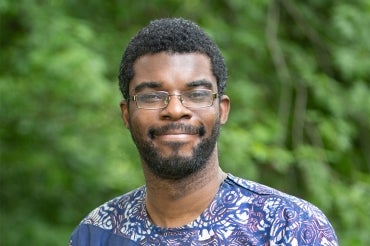'Re-humanizing' design: Meet new U of T Engineering faculty member Philip Asare

Published: August 18, 2020
Philip Asare recently joined the division of engineering science in the University of Toronto’s Faculty of Applied Science & Engineering, as well as the Institute for Studies in Transdisciplinary Engineering Education and Practice (ISTEP) – an institute created “to drive change in how we prepare future engineering leaders.”
An assistant professor, teaching stream, Asare says engineering is an activity geared towards human goals, full of rich and interesting stories of how particular ideas or products came to be.
“The human dynamics involved in the process have a significant effect on the outcome – who is doing the engineering matters a lot,” he says.
Asare was previously an assistant professor of electrical and computer engineering at Bucknell University. He also spent time as a scholar-in residence at the U.S. Food and Drug Administration while earning his PhD in computer engineering from the University of Virginia.
Writer Tyler Irving recently spoke with Asare to find out more about his research and his philosophy of engineering education.
Can you talk about your background in STEM? Why did you choose engineering?
I decided to pursue engineering in the hope of using my skills to better the human condition. This is why I gravitated towards medical applications in my work, such as assessing and assuring safety of emerging medical devices.
Along the way, I realized that, in North America, many people who are involved in engineering and in technical fields more broadly did not look like me or share a similar background. I grew up in Ghana, where my mom is an engineer, and most of the engineers I knew were like me (though we still have problems related to gender and socio-economic status).
Being aware of the under-representation led me to get involved in outreach efforts, even as an undergraduate. I’ve been on a quest to address issues of diversity, equity, and inclusion in these fields ever since.
I decided to get into higher education because I felt that, in addition to the impact I could make from my own work, I can also help train the next generation of science, technology, engineering and mathematics (STEM) professionals to be attentive to issues of the human condition, including social justice, equity and inclusion.
You’ve said that you see engineering as a “humanist enterprise.” What does that mean?
Engineering is a human activity geared towards human goals, full of rich and interesting stories of how particular ideas or products came to be. The human dynamics involved in the process have a significant effect on the outcome – who is doing the engineering matters a lot.
There’s a quote in the book Plato and the Nerd by Edward A. Lee of UC Berkeley that I love: “Technology is not a collection of Platonic truths that have always been lurking in the background, waiting to be discovered, but is rather a rich sociological tapestry of ideas created by human inventors. It is shaped by those humans and, had a different set of humans created it, including more women, for example, the technology would unquestionably be different.”
Why did you choose U of T Engineering?
I loved the idea of ISTEP and the goals they had in mind when it was set up. The same is true of the engineering science program. In my career, I have looked at engineering often from a design perspective, so the fact that this position would be focused on design and housed in both ISTEP and EngSci really resonated with me.
I feel like the question, “How should we prepare the next generation of engineering leaders for the world they will face in 2050?” is something I’ve been asking myself for a while, and the opportunity to explore this with folks here was really attractive.
In addition, Toronto works out well for my family, and U of T’s size, diversity of research fields and prominence mean that I get to interact with a lot of different people, which is exciting for me.
What are your plans for teaching and research?
The overarching theme will be “re-humanizing design.” Course-wise, I’m responsible for the second-year engineering science design course Praxis III as well as the capstone course for engineering science’s electrical and computer engineering majors.
On the research side, I’m going to continue my work on increasing representation of underrepresented groups in STEM. I also have some work on how we educate engineers to operate in the complex socio-technical world we have created using various engaging pedagogies that will also be continuing. In addition, I will be continuing my work on system design, especially in the medical area.
What one piece of advice would you give to new students?
Learning happens in many places – not just in the classroom or in a course. Pay attention to those learning moments that happen outside traditional spaces. Take time to get to know people deeply, especially people who have different backgrounds and experiences than you do.
University is one of the few times in life you’ll have your time mainly focused on learning and making connections with others. Make the most of it.


